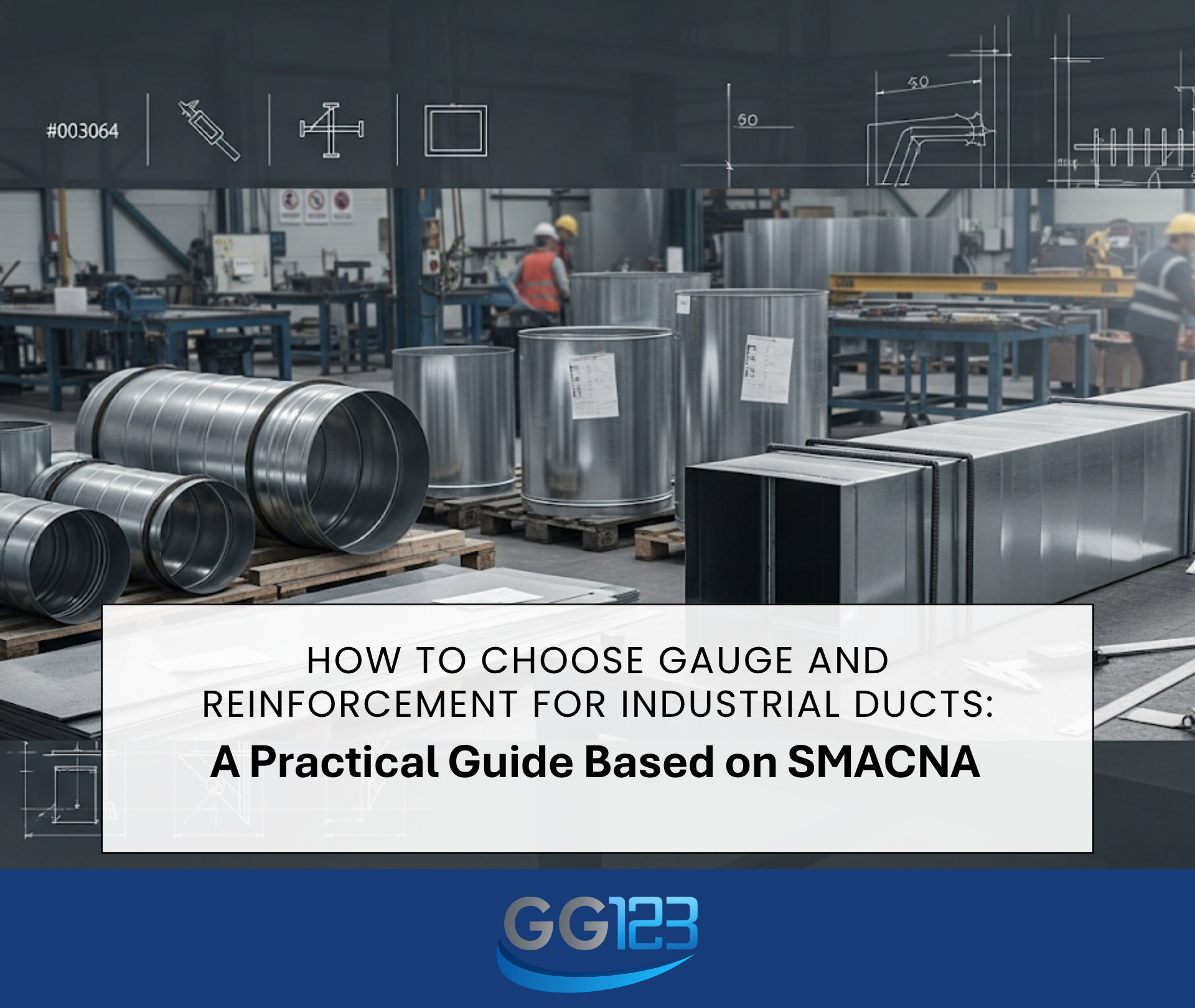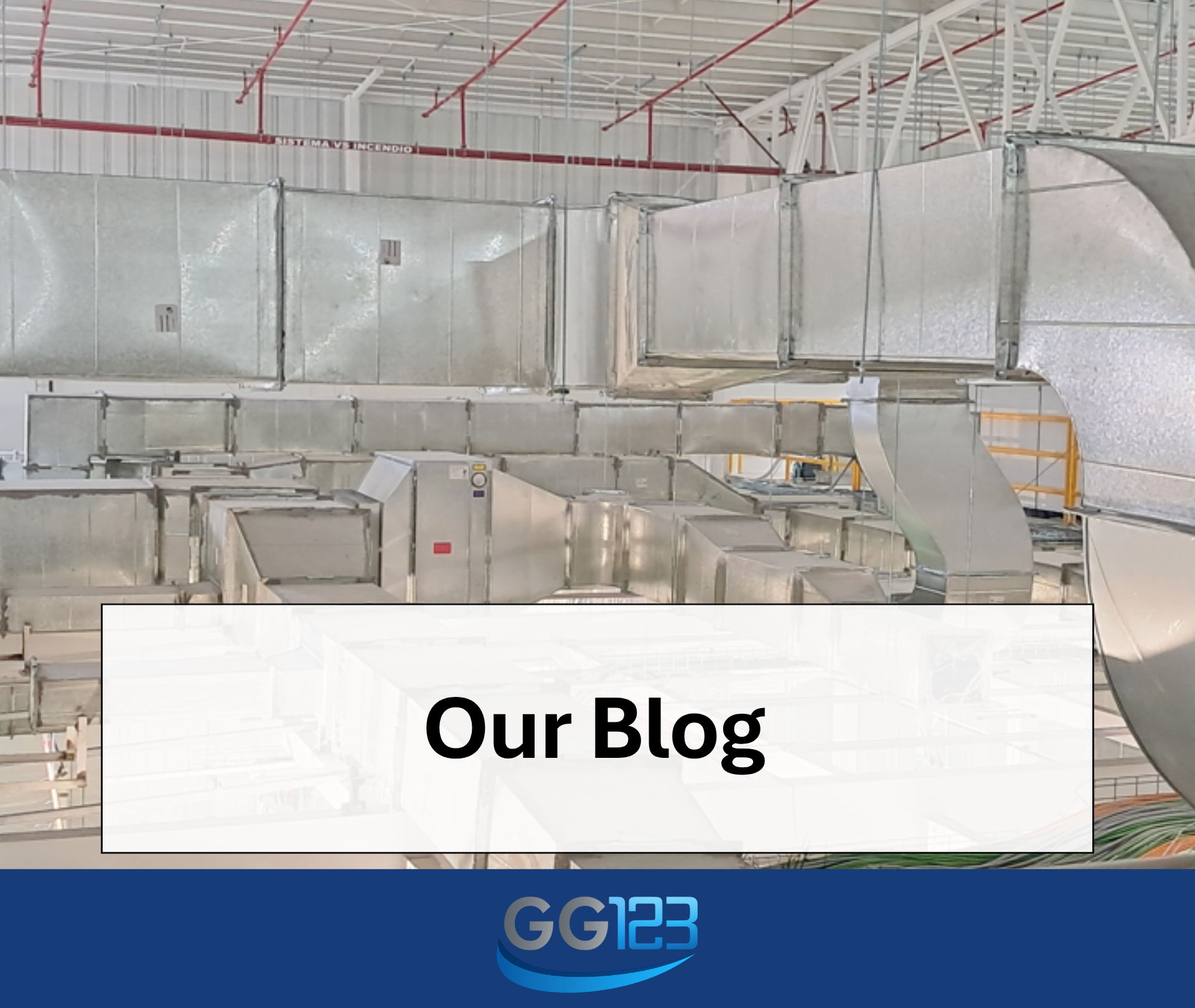
How to Choose Gauge and Reinforcement for Industrial Ducts: A Practical Guide Based on SMACNA
The selection of the correct gauge (sheet thickness) and reinforcement (stiffening and support) defines the durability, airtightness, and safety of a ventilation system. An undersized or under-reinforced duct can experience vibration, deformation, leaks, and increased maintenance costs. At GG123 Mexico, we combine BIM, automated machinery, and SMACNA standards to deliver reliable, efficient, and installation-ready solutions.
Key factors for defining gauge and reinforcement
1) Duct dimensions
The larger the width/height (for rectangular ducts) or diameter (for spiral ducts), the greater the thickness and stiffness required. Structural behavior does not grow linearly — as one side increases, deflection and deformation tendencies grow significantly.
2) Air pressure and velocity
Static pressure and velocity directly affect wall buckling and noise generation. Medium/high-pressure sections and areas near equipment require heavier gauges and stronger reinforcement.
3) Duct length and hanger spacing
Long, unsupported runs increase vibration and deflection. The spacing of hangers (rods, anchors, crossbars) and placement of transverse/longitudinal stiffeners control system rigidity.
4) Environmental conditions
Corrosive or outdoor environments and frequent cleaning require proper finishes, sheet thickness, and edge protection. Temperature, humidity, and sun exposure are also considered.
5) Interaction with other trades
Interferences with electrical, sprinklers, racks, or production lines influence the location of reinforcements and inspection accesses. Early coordination in BIM prevents rework.
Most common types of reinforcement
- Perimeter reinforcement: angles or flanges (including TDF systems) that stiffen edges and improve sealing.
- Transverse stiffeners: frames or profiles installed periodically to prevent wall buckling.
- Longitudinal reinforcement: continuous ribs or profiles along long duct faces.
- Crossbars and braces: prevent deformation in exposed surfaces or large spans.
- Hangers and supports: threaded rods, clamps, and anchors with calculated spacing.
How GG123 determines gauge and reinforcement
1) SMACNA criteria + local experience
We use SMACNA tables and criteria as a baseline to classify ducts by pressure, velocity, and size — complemented by our experience in the Mexican industry and projects across Latin America.
2) BIM modeling and intelligent segmentation
In BIM, we resolve interferences, generate numbered breakdowns, and optimize the location of stiffeners and hangers. Each piece is fabricated with the proper gauge and arrives on site ready to install.
3) Manufacturing with automated machinery
Our automated machinery guarantees tolerances, uniform joints, and consistent flanges. This reduces leaks, improves airtightness, and accelerates on-site assembly.
Best practices to specify without errors
Define the pressure class
Classify the system (low, medium, or high pressure) according to design. This defines the minimum gauge and reinforcement requirements.
Control vibration and noise
Include flexible connections at equipment, extra reinforcement near fans and direction changes, and keep air velocity within acceptable noise limits.
Plan supports and access points
Define hanger spacing and reinforcement points before fabrication. Add inspection doors where cleaning or balancing is required.
Consider maintenance and corrosion
Select finishes and protections based on the environment. Avoid metal-to-metal contact during transport and store ducts in dry, level areas.
GG123 competitive advantages
- Use of BIM technology for accurate gauge and reinforcement decisions.
- Cost savings from reduced rework, fewer leaks, and shorter installation times.
- Time reduction through prefabrication and ready-to-install assemblies.
- Automated machinery ensuring precise tolerances and consistent quality.
- Comprehensive solutions: engineering, manufacturing, logistics, and on-site support.
- Product variety: square/rectangular ducts, spiroducts, fittings, elbows, reducers.
Selecting the correct gauge and reinforcement is not a minor detail — it’s the foundation of a reliable and long-lasting system. With GG123, you get a design based on SMACNA, modeled in BIM, and manufactured with automated machinery, translating into cost savings, time reduction, and an installation ready to operate.
Note: This guide is for reference purposes. The final selection must be validated against the executive project, current standards, and applicable reference tables (e.g., SMACNA).



